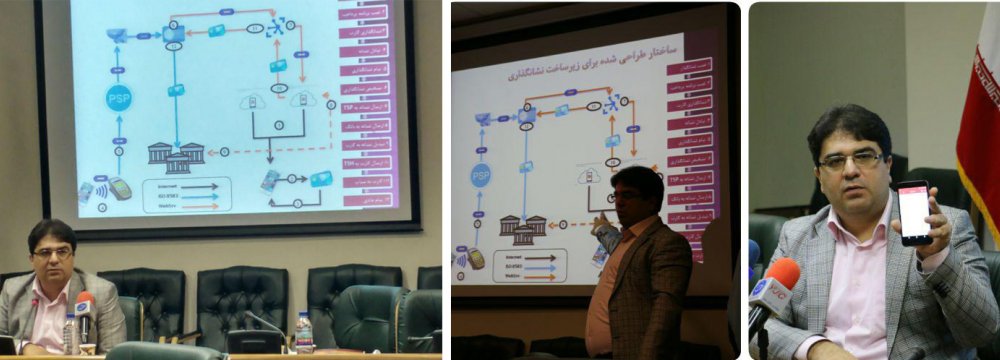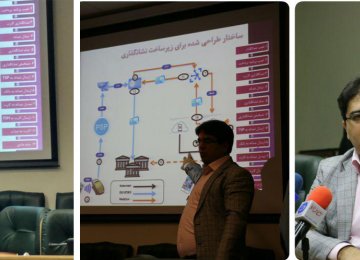New mobile payment infrastructures have been set up in Iran to facilitate the use of new payment systems such as tap-and-go cards.
The Central Bank of Iran is developing new mobile payment systems so people may use their smartphones or watches for making purchases, said the director of CBI's IT Department.
Tap-and-go cards, also known as wave-to-pay, tap-to-pay or contactless cards, contain a computer chip and antenna instead of the magnetic stripe on the back of traditional cards. The technology sends data wirelessly to a nearby terminal, completing purchases with a process called near-field communication, or NFC.
"In order to use tap-and-go cards, customers need to install an application on their phone and insert their cards' information in it," Nasser Hakimi also told a news conference, the CBI's website reported.
The banks will virtualize the card with security measures inside the app such that to make a payment, one only needs to activate the application and bring the phone close to POS terminals. The same is also planned for ATMs.
Hakimi noted that this process is far more secure than bank cards, since digital payments like tap-and-go has three security layers. First, users need to unlock their phones, then enter the application's security code and finally the card's password. This is to ensure that even if someone's phone is lost, it wouldn’t cause much worry since the data is safe and the application could be recovered on a new phone.
Tap-and-go was officially launched on May 3 in Tehran's International Book Fair.
The CBI official said the purchase limit for these cards is 2 million rials ($53) for now, but it will be raised to 500 million rials ($13,350) within six months like other regular bank cards.
NFC is a short-range wireless connectivity standard that uses magnetic field induction to enable communication between devices when they’re touched together, or brought within a few centimeters of each other.
The original purpose of tap-and-go cards was to promote speed and convenience, but there is another benefit that isn't so obvious.
Tap-and-go cards use something called dynamic encryption technology, which generates a new security code for each transaction and is more secure than the familiar fraud-prone magnetic strip.
Official Launch
Hakimi noted that fintech issues caused by limited access to payment processes will be resolved through the new tokenization system.
In tokenization, a part of the users' sensitive data will be shown as digital tokens and transferred to the national payment network where digital tokens get back to their original form in a secure area and the payment process continues as normal.
The Tokenization Center–also known as Mana– is responsible for changing the form of sensitive data to digital tokens and vice versa. Banks can use their own Mana or outsource it to other approved centers, but they are fully responsible for users' data security.
"Setting up the new system's infrastructures requires close assistance of Information Services Corporation, banks, Shaparak Company and payment service providers along with CBI. It is hoped that the use of smart gadgets for making payments will become more and more popular among people," he said.
Mohsen Qaderi, CEO of Shaparak Company–a firm that aims to integrate electronic payments in the country–also elaborated on the NFC system.
"In order to upgrade the payment system industry in line with global standards, Shaparak designed a system for NFC payment with the support of CBI," he said.
"NFC is not exclusive to one PSP or mobile phone provider or bank, so its progress should be rather fast."
Qaderi noted that since all the standards are considered in the design, the US company Apple does not allow anyone, not even its own commercial partners to use the NFC of its iPhones so the payment is now only available for Android phones.
However, Shaparak Company plans to use another system for iOS phones invented by VISA Company named MVISA, which is able to read QRCODE to cover Apple smartphones.
"NFC is being used in the world for more than a decade as a substitute for bank cards since it is easy, fast and secure but unfortunately we did not have the necessary infrastructure until now," Qaderi said.
Earlier, a few banks and mobile operators put some effort in NFC payments such as Bank Mellat that developed the system exclusively for their own customers but it is the first time that this system is being officially launched on a large scale.






Add new comment
Read our comment policy before posting your viewpoints